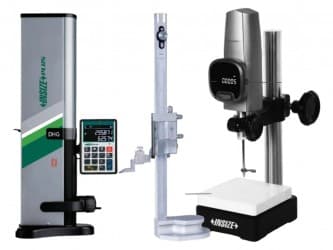Data Output & Software
Data output and
software play a crucial role in the functionality and usability of many
measurement and testing instruments. They enable the collection, analysis, and
visualization of data, as well as provide additional functionalities for data
management and reporting. Here are some key aspects related to data output and
software in measurement instruments:
1. Data Output Options: Measurement instruments
may offer various data output options to facilitate data transfer and analysis.
These options can include:
·
Digital Displays: Many
instruments have built-in digital displays that provide real-time readings and
measurements directly on the device.
·
Analog Outputs: Some
instruments feature analog output ports, such as voltage or current signals, to
interface with other equipment or data acquisition systems.
·
Serial Interfaces:
Instruments may include serial communication ports, such as RS-232 or USB,
allowing for direct connection to computers or external devices.
·
Wireless Connectivity:
Some modern instruments support wireless data transfer using technologies like
Bluetooth or Wi-Fi, enabling seamless connectivity with smartphones, tablets,
or computers.
2. Software Integration: Measurement instruments
often come with dedicated software that enhances their functionality and
enables advanced data analysis and visualization. This software can provide
additional features, such as:
·
Data Logging: Software
may allow for continuous data logging, capturing measurements over time and
storing them in a structured format.
·
Graphical
Representation: Software often offers graphical tools to plot data, create
charts, and visualize trends or patterns.
·
Statistical Analysis:
Advanced software may include statistical analysis capabilities to calculate
averages, standard deviations, or perform regression analysis on collected
data.
·
Customization: Some
software allows users to customize measurement settings, set thresholds or
alarms, and define specific measurement criteria.
3. Data Management and Reporting: Software
associated with measurement instruments often includes data management
features, allowing users to organize, search, and retrieve stored data
efficiently. Additionally, software may provide reporting capabilities to
generate customized reports or export data in various formats for further
analysis or documentation purposes.
4. Third-Party Software Integration: In some
cases, measurement instruments can be integrated with third-party software or
programming languages, such as MATLAB or LabVIEW. This integration allows for
seamless data transfer and analysis within a broader system or workflow.
The availability and
capabilities of data output and software features can vary depending on the
specific instrument and its intended use. It's important to review the
specifications and documentation provided by the instrument manufacturer to
understand the available options and compatibility with data output and
software systems.
.jpg&w=3840&q=75)




